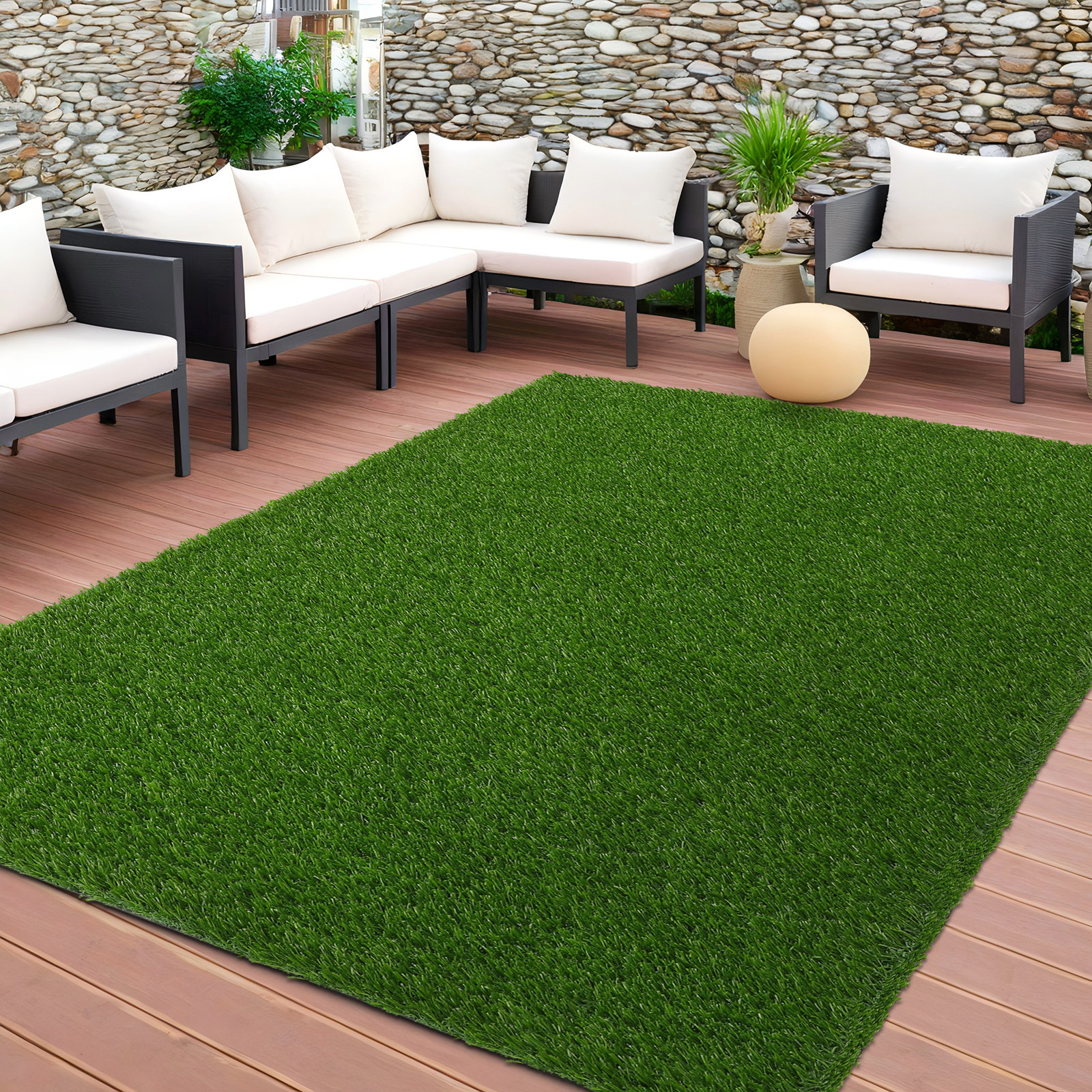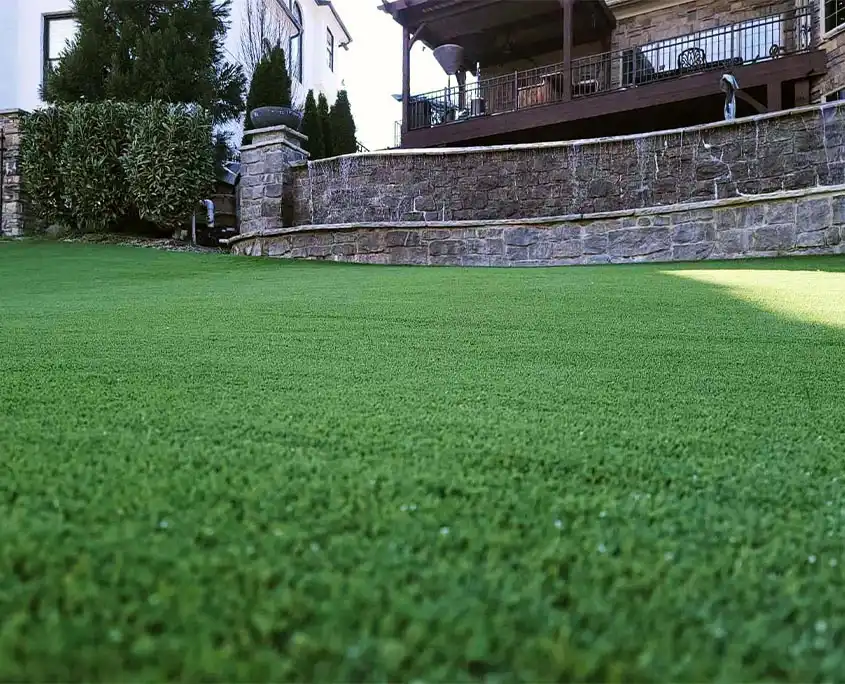See Why Homeowners Prefer Synthetic Grass for Lasting Landscape Design Practices
As homeowners progressively prioritize sustainability in landscape design, synthetic lawn has emerged as an engaging option to conventional grass. What remains to be checked out is the full range of advantages that synthetic lawn can offer to house owners and the setting alike.
Water Conservation Conveniences
One of one of the most significant advantages of synthetic grass is its duty in water conservation. Typical grass lawns need substantial amounts of water to preserve their lavish appearance, commonly bring about overuse of local water resources, particularly in deserts. On the other hand, synthetic grass eliminates this need totally, as it does not require irrigation. This not just saves water yet also minimizes the pressure on metropolitan water systems, particularly during dry spell problems.
In addition, the installation of synthetic grass can add to a more lasting landscape. Home owners can substantially decrease their water bills, enabling reallocation of resources to other ecological initiatives or home uses. Furthermore, synthetic lawn is made to hold up against different climatic conditions without the demand for supplementary watering, making it an excellent selection for regions facing water scarcity.
The ecological benefits extend past instant water savings. By lowering water intake, synthetic turf aids to alleviate the impacts of environment modification, preserving essential environments that are threatened by too much water extraction. As sustainable landscape design practices obtain traction, fabricated grass becomes a liable choice for home owners seeking to develop environment-friendly outdoor rooms.
Decreased Upkeep Efforts
Synthetic grass substantially reduces upkeep initiatives compared to typical turf yards. With artificial lawn, homeowners can get rid of the taxing tasks related to all-natural landscaping, such as mowing, fertilizing, and weeding. This not just saves useful time yet also minimizes physical labor, making grass care easily accessible for individuals of any ages.
Typical lawns need constant cutting to maintain a visually pleasing height, whereas man-made grass remains regularly rich without the requirement for cutting. Additionally, property owners no much longer require to use pesticides or fertilizers, which are frequently required to keep all-natural lawn healthy and balanced.
Moreover, synthetic grass is resilient and durable, calling for very little upkeep beyond periodic cleaning and rinsing to remove particles. This convenience of upkeep allows homeowners to appreciate their outside spaces without the constant fear of upkeep, providing even more time for leisure and family tasks. Eventually, the decreased upkeep initiatives associated with synthetic grass make it an attractive option for those looking for a low-maintenance, visually appealing landscape.

Environmental Effect Decrease
There is an expanding acknowledgment of the environmental benefits connected with man-made lawn, particularly in terms of water conservation and decreased chemical use. Standard grass call for substantial quantities of water, specifically in drought-prone regions, leading to increased strain on regional water resources. In comparison, synthetic grass removes the demand for watering, drastically decreasing water consumption and promoting sustainability.
Additionally, standard grass upkeep usually entails the application of herbicides, chemicals, and plant foods, which can contribute to soil and water pollution. Artificial lawn minimizes this ecological danger by needing minimal upkeep and basically removing the requirement for damaging chemicals. This not only boosts dirt health and wellness but also shields regional environments from harmful runoff.
In addition, the manufacturing of natural yard yards generally involves using fossil my sources fuels for trimming and landscape design devices, further adding to greenhouse gas emissions. By picking synthetic grass, homeowners can substantially lower their carbon impact connected with grass care tasks.
Aesthetic Allure and Adaptability
In addition to its ecological advantages, synthetic grass offers considerable visual allure and versatility for landscaping. Home owners can achieve a lush, eco-friendly look year-round, removing the seasonal fluctuations typically connected with all-natural yard. This consistent aesthetic not only improves the visual charm of a building but also this page adds to a refined and well-kept appearance.
In addition, synthetic grass is available in a variety of appearances, designs, and shades, allowing for customization to suit individual choices and layout motifs - Turf installation phoenix az. Whether used in household yards, business areas, or leisure areas, it can seamlessly incorporate right into diverse landscaping layouts, from contemporary minimalist to lush exotic setups
The flexibility of synthetic grass extends past simple appearance; it can be mounted in numerous places, including roofs, patio areas, and even indoor rooms, producing opportunities for one-of-a-kind landscape design services. Additionally, it appropriates for an array of activities, from children's play locations to pet-friendly atmospheres, offering functionality without endangering style.
Ultimately, the visual charm and versatility of synthetic grass make it an appealing option for homeowners looking for sustainable landscape design services that do not give up appeal for Continued environmental obligation.

Long-Term Price Savings
One of the most engaging benefits of man-made turf is its possibility for long-lasting cost financial savings. Unlike all-natural turf, which requires normal maintenance-- including mowing, watering, feeding, and pest control-- artificial turf substantially minimizes these ongoing costs.
Furthermore, synthetic grass has a lifespan of 15 to 25 years, relying on its high quality and use. This longevity lessens replacement expenses, making it a more cost-effective choice in the future. The first investment in fabricated turf can commonly be recouped with the financial savings accumulated over time.
While the ahead of time cost may appear higher compared to turf installment, the cumulative cost savings from reduced maintenance and water use often exceed these first expenses. Ultimately, the fostering of fabricated turf not only advertises a lasting landscaping service yet also provides house owners a monetarily savvy choice that lines up with lasting budgeting objectives.
Conclusion
Artificial lawn arises as an engaging alternative for lasting landscape design, supplying considerable advantages in water conservation, reduced maintenance initiatives, and lessened ecological effect. As neighborhoods increasingly focus on ecologically friendly techniques, the fostering of synthetic turf stands for a modern step towards accomplishing sustainable and resistant landscapes.
In addition, man-made grass is designed to hold up against different weather problems without the need for supplementary watering, making it a suitable option for areas dealing with water scarcity. (Arizona turf)

Synthetic turf arises as an engaging choice for sustainable landscaping, supplying substantial advantages in water conservation, lowered maintenance efforts, and lessened ecological impact.
Comments on “Well-Known Artificial Turf Companies Phoenix for a Beautiful and Green Lawn”